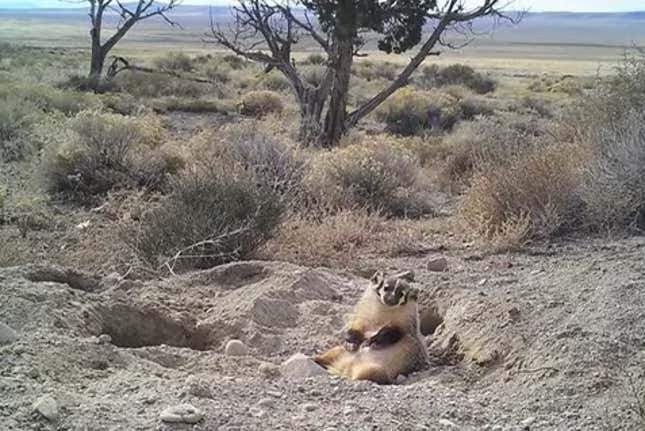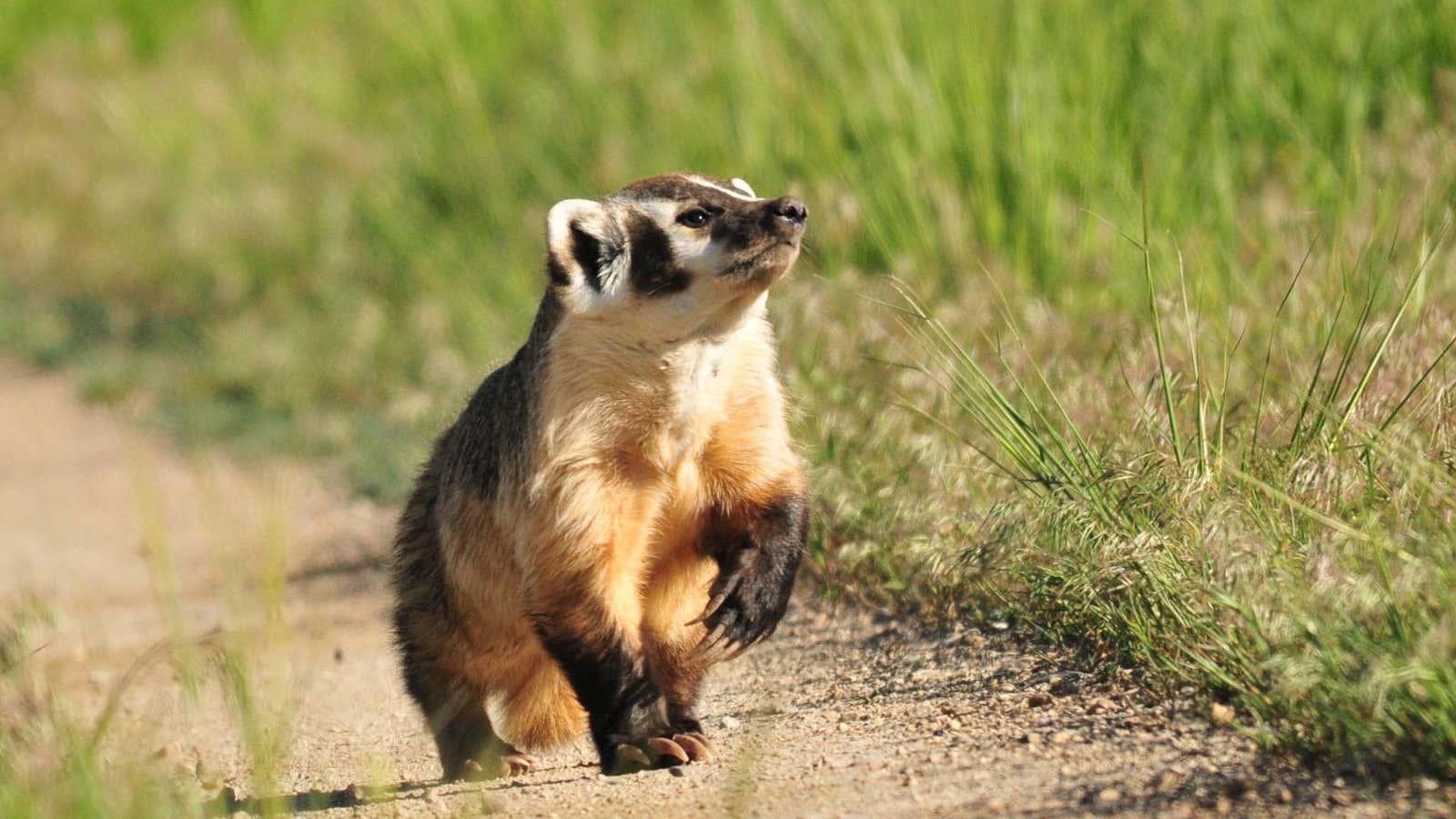Researchers were delighted when an American badger in Utah was recorded on video late this winter frantically burying an entire calf over the course of several days. The badger worked continuously through days and nights to dig around and under the small cow carcass, until the tunnels it dug beneath it collapsed and the cow, more than three times the badger’s size, was entirely covered in dirt.
“I was really shocked and amazed, and really excited,” Evan Buechley, a doctoral candidate at the University of Utah and co-author of a recent paper describing the event told the Guardian. Ethan Frehner, an undergraduate at the University of Utah and another author on the paper, said in a press release that little is known about badger behavior, since the typically nocturnal animals spend a lot of time underground and are most active at night. He called this badger’s feat “impressive.”
“It’s a lot of excavation engineering they put into accomplishing this.”
Badgers have been observed before burying small animals underground, where they can be kept cool, which slows decomposition, allowing them to be eaten later. But, as the summary of the team’s paper says, “While badgers are known to scavenge and to cache small food items underground, this is the first evidence of an American badger caching an animal carcass larger than itself.”
When it finished, the badger sat atop the loamy burial mound and looked directly at the camera.

Then it built a den next to the carcass, and spent eleven days below ground without resurfacing, while presumably eating a lot of beef. “For about two weeks it hung out underground,” Buechley told the Guardian. “Down there it has got this awesome food source.”
Researchers had placed several calf carcasses in an area in the Great Basin Desert, to study what animals would come to feed off of them. The researchers expected vultures and coyotes, not badgers. A second badger was described doing the same thing to another calf carcass nearby, indicating that it “wasn’t a one-off, freak behavior,” Buechley said.
